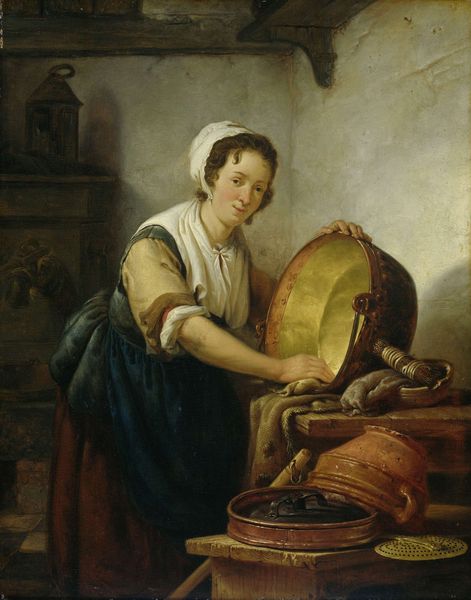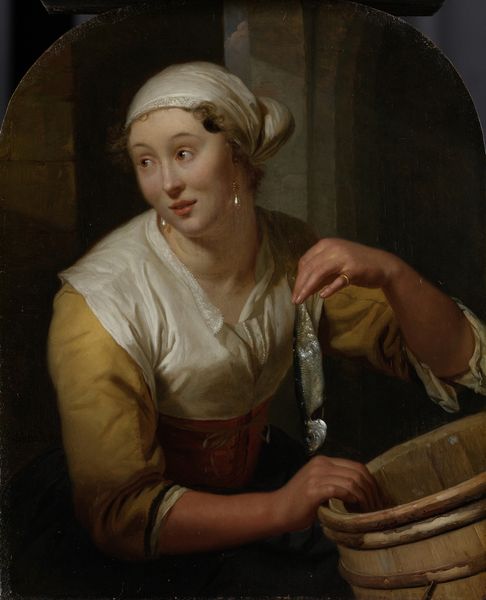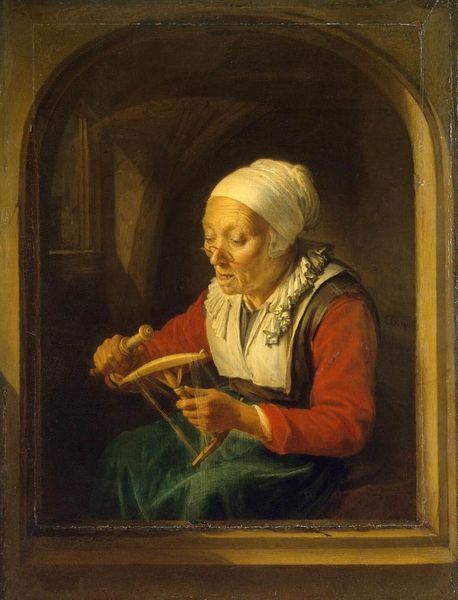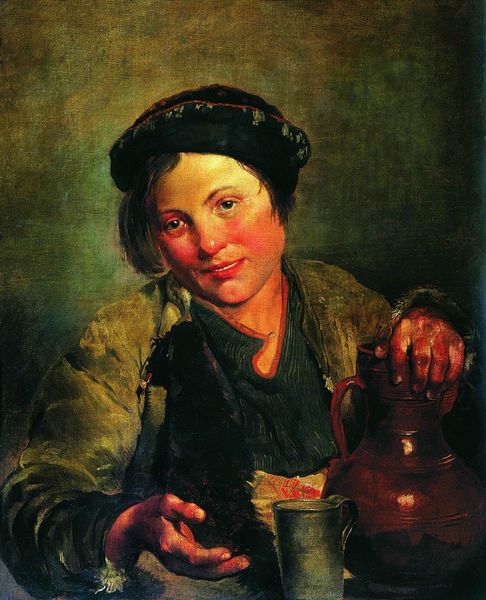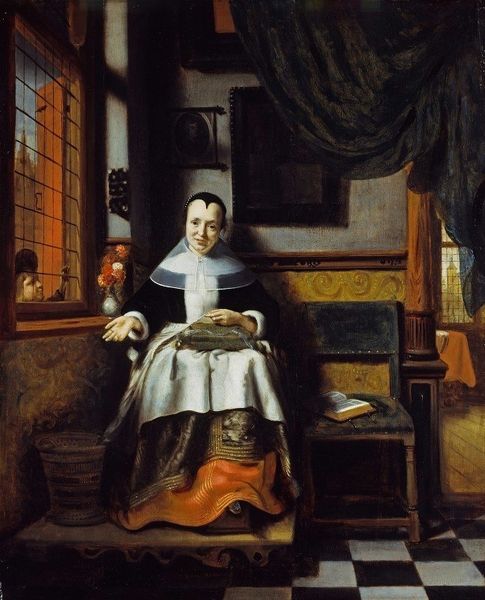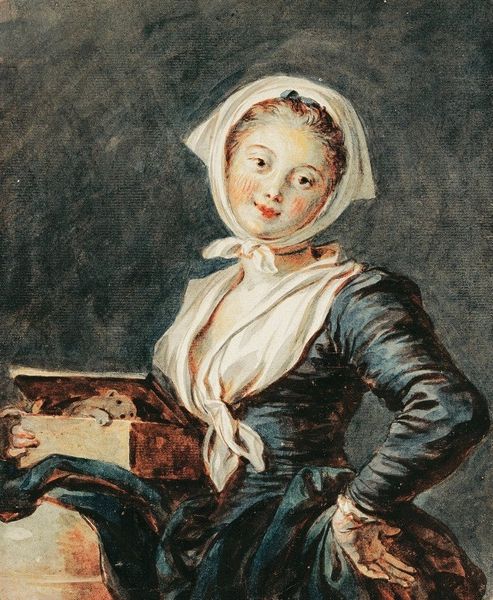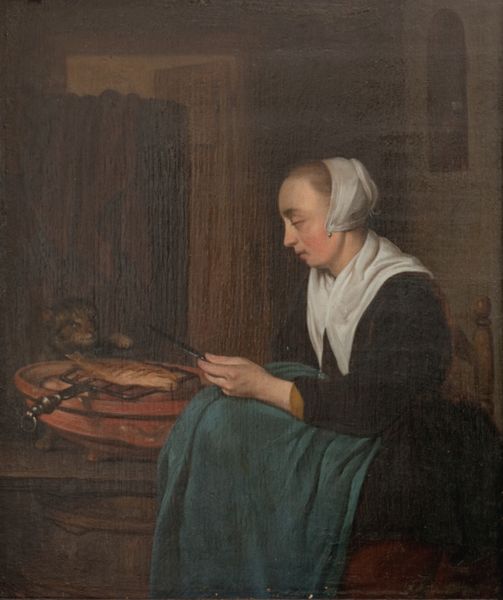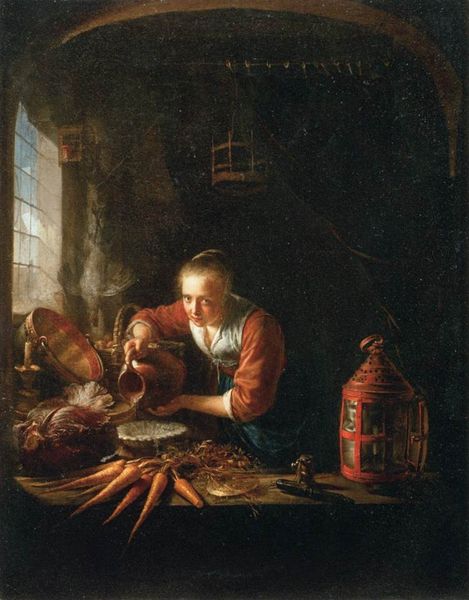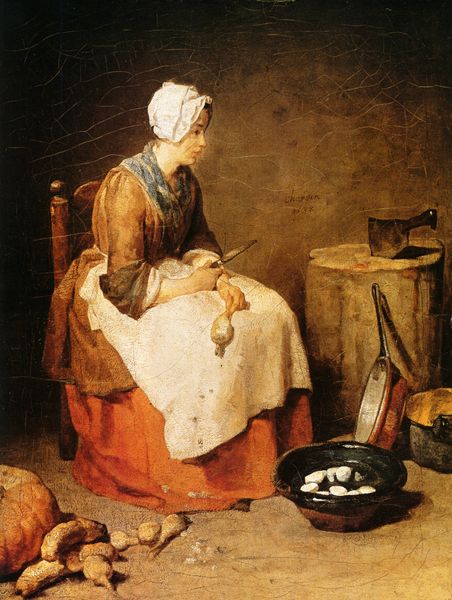
painting, oil-paint
#
portrait
#
dutch-golden-age
#
painting
#
oil-paint
#
oil painting
#
genre-painting
#
history-painting
#
realism
Dimensions: 23.9 x 21 cm
Copyright: Public domain
This is Gabriel Metsu's painting, Washerwoman, likely completed in the mid-17th century using oil on panel. Notice how the artist uses dark, earthy tones to envelop the scene, creating a sense of intimacy and quiet labour. The composition is structured around a central triangle formed by the woman's figure, drawing our eye directly to her hands immersed in the basin. The way the light catches the white cloth draws attention to the stark reality of her work. Metsu employs a sophisticated use of chiaroscuro, with light and shadow playing off each other to model form and texture. Consider how Metsu uses these formal elements to comment on the everyday lives of working-class individuals. While seemingly straightforward, the painting engages with broader artistic and philosophical concerns about representation and social status, inviting us to see beauty and value in the mundane. The interplay of light and shadow and the textures of the fabrics are not just aesthetic choices, they are also cultural signifiers that prompt ongoing interpretation.
Comments
No comments
Be the first to comment and join the conversation on the ultimate creative platform.

